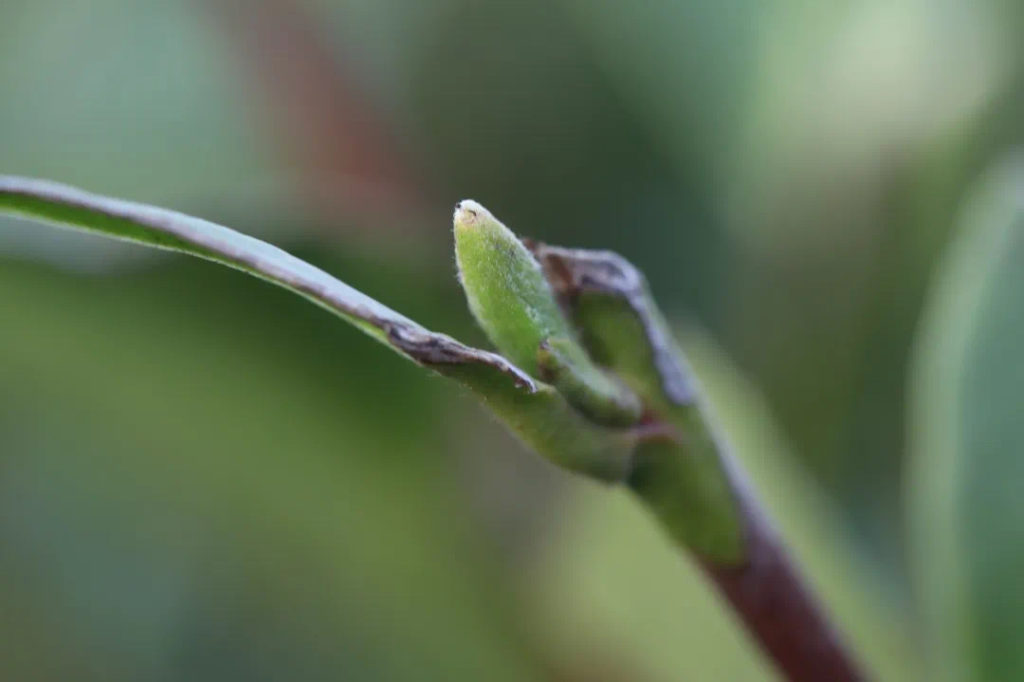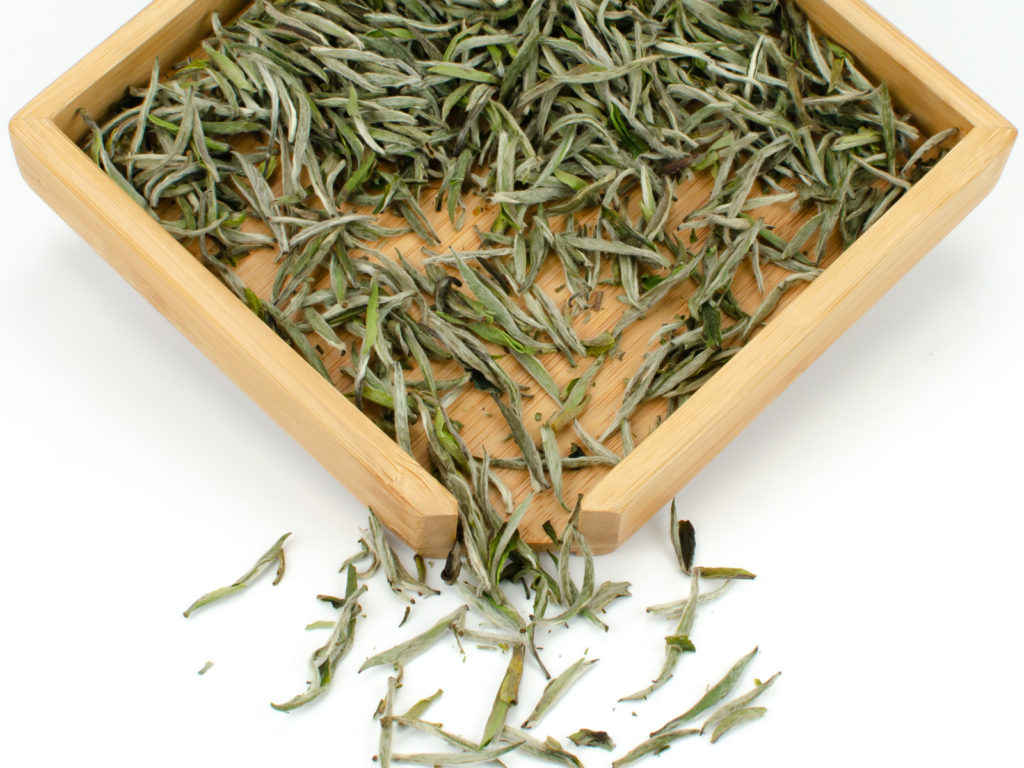About Baihao Yinzhen (Silver Needle)
White tea is made in four counties in Fujian province, Fuding, Zhen He, Jian Yang, and Song Xi, though Baihao Yinzhen (Silver Needle) white tea is only made in Fuding and Zhen He. These counties grow unique cultivars of the tea bush, Fuding Dabai and Zhen He Dabai, which are capable of producing the large and stylish tea buds that Silver Needle is known for. Seven Cups’ Silver Needle is made entirely from Fuding’s original Dabai bush type, known for having buds that are bigger, richer, fatter and more numerous than the Zhen He cultivar. Additionally, Fuding’s Silver Needle white tea touts the claim of being the original, invented in 1796, much earlier than Zhen He’s.
Even at its beginning, white tea was a popular export to Europe. Its conspicuously large buds were some times blended with simple black tea to enhance its visual appeal. The First World War halted the export of white tea in 1918. Exports resumed briefly in 1926 but only to be stopped again by the escalation to the Second World War. White tea finally returned to the Western market in the late 20th century where it has been viewed with renewed curiosity.

Making Silver Needle
The sweetest of the white teas, Silver needle is made up of only buds from the tea bush. Meticulously separated from the stem, the buds are fanned on to a single layer on a bamboo tray, for at 36 to 38 hours, and dried in the sun until 85-90% of their moisture is removed. The withering process is completed indoors as the tea is roasted over charcoal. During the roast, the tea is separated from the charcoal by bamboo trays lined with paper. The very low temperature drying of this tea is designed to preserve the white color of its buds. Too high of a temperature will make the buds yellow.
Unlike green tea, white tea is never fired or steamed to kill the enzymatic action that causes oxidation. Instead, oxidation of the leaves is prevented by their lack of moisture. The withering process is very long and gradual, thus slight oxidation of the leaves (or buds) will naturally occur. With this slight amount of oxidation, white tea’s color is typically not as bright or green as you would expect from a green tea.
Judging the quality of Silver Needle white tea
High quality Silver Needle should be made up of large, healthy tea buds with most of their white down intact. When infused, the buds will turn to a light green color right away. The color of the infusion is like a light honey. When compared to infused green tea, it will appear slightly yellow.
The fragrance is light, akin to freshly bloomed flowers. The flavor is more juicy than dry, filling the mouth with a smooth and lingering sweetness.
For first time tea drinkers and seasoned aficionados alike, Silver Needle white tea is a very approachable tea. It is easier on the stomach than a green tea and even a long infusion in high temperature water will not bitter the flavor. You will find it very easy to drink and very easy to brew.

